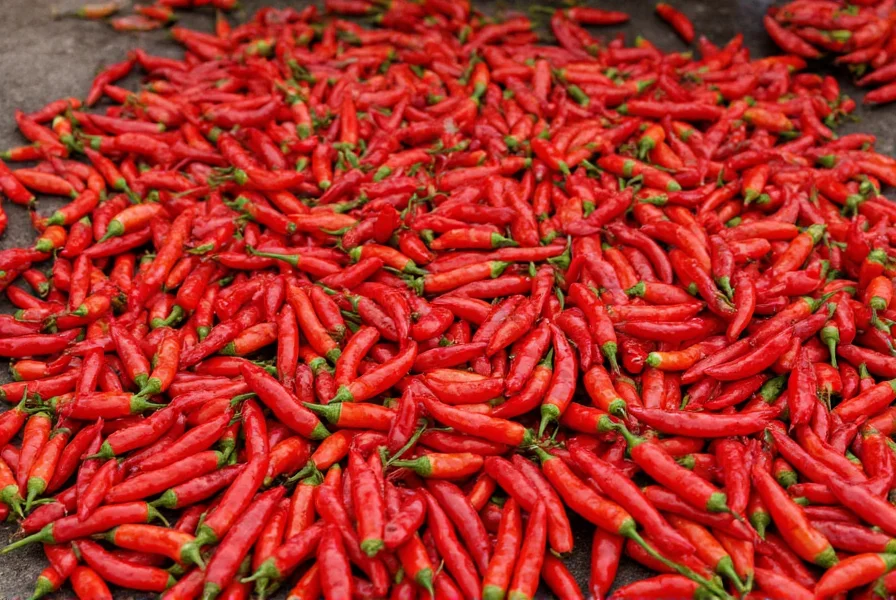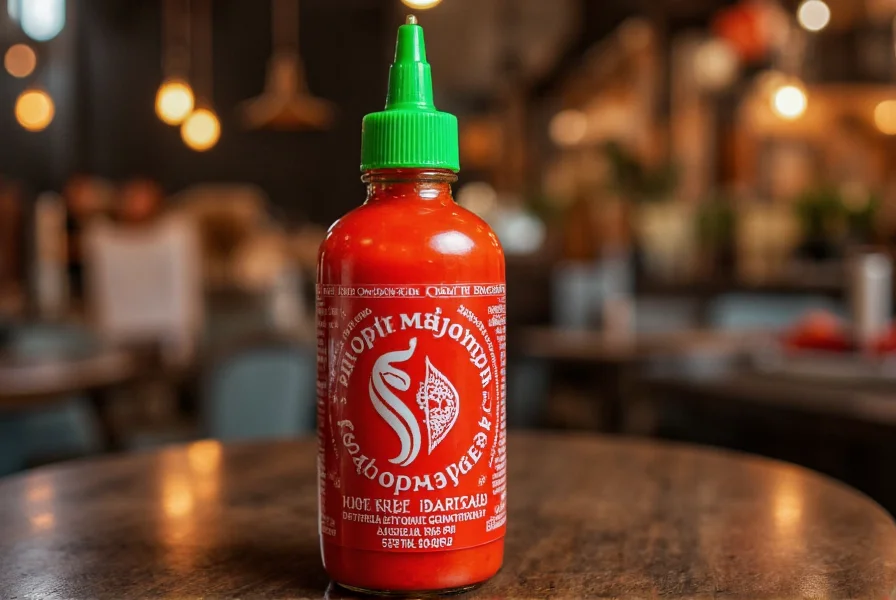Sriracha has transcended its Southeast Asian roots to become a global culinary staple, yet many consumers misunderstand its authentic composition and traditional uses. Unlike generic "hot sauces," genuine sriracha maintains a distinctive texture from crushed chili peppers and garlic, creating a versatile condiment that enhances rather than overwhelms dishes.
Authentic Origins and Cultural Evolution
Despite its worldwide popularity, true sriracha originated in the coastal Thai town of Si Racha around the 1940s. Local chef Thanom Chakkapak developed the original recipe using locally grown Prik Khi Nu chili peppers. The sauce gained international recognition when Vietnamese immigrant David Tran created Huy Fong Foods' rooster-labeled version in California during the 1980s, adapting the Thai recipe with slight modifications to suit broader palates.

Ingredient Breakdown and Manufacturing Process
Authentic sriracha production follows a specific methodology that contributes to its unique characteristics:
| Core Ingredient | Percentage | Function |
|---|---|---|
| Sun-ripened red chili peppers | 45-50% | Provides heat and vibrant color |
| Garlic | 15-20% | Creates distinctive aroma and flavor base |
| Distilled vinegar | 10-12% | Preservation and tangy acidity |
| Sugar | 8-10% | Balances heat with sweetness |
| Salt | 3-5% | Enhances flavor and acts as preservative |
The manufacturing process involves grinding fresh red jalapeño-style peppers with garlic into a paste, then fermenting this mixture with vinegar and sugar for approximately 30 days. This fermentation develops complex flavors while natural pectin creates the sauce's characteristic thick texture without requiring thickeners.
Distinguishing Authentic Sriracha from Imitations
Many commercial products labeled as "sriracha" differ significantly from traditional formulations. Key differentiators include:
- Texture: Authentic sriracha contains visible chili and garlic particles, creating a slightly coarse consistency rather than a perfectly smooth liquid
- Color: Natural brick-red hue from ripe peppers (not artificially enhanced)
- Ingredients: No artificial preservatives, colors, or thickeners like xanthan gum
- Flavor progression: Balanced heat that builds gradually rather than immediate intense burn
When comparing sriracha vs other hot sauces, the Thai original stands apart through its garlic-forward profile and moderate heat level. Tabasco relies on distilled vinegar for sharper acidity, while gochujang incorporates fermented soybeans for umami depth.
Practical Culinary Applications
Understanding how to use sriracha properly elevates its culinary value beyond simple heat addition. Professional chefs recommend these evidence-based applications:
- Marinades: Combine with lime juice and fish sauce for Southeast Asian-inspired proteins (3 parts sriracha to 1 part acid)
- Emulsified sauces: Whisk with mayonnaise or yogurt at room temperature to prevent separation
- Finishing touch: Add after cooking to preserve volatile flavor compounds
- Balancing element: Counteract excessive richness in fatty dishes like pork belly or duck
Nutritional Profile and Storage Guidelines
Sriracha's nutritional composition makes it a relatively low-impact flavor enhancer. Per tablespoon (15ml) serving:
- Calories: 20-25
- Carbohydrates: 5g (primarily from natural sugars)
- Sodium: 120-150mg
- Vitamin C: 15% of daily value
- No artificial preservatives or colors in authentic formulations
Proper storage maintains sriracha's quality and safety. Unopened bottles remain stable at room temperature for 18-24 months. After opening, refrigeration extends freshness for 6-9 months by slowing enzymatic browning. Always use clean utensils to prevent bacterial contamination, and discard if mold appears or the color significantly darkens.
Common Misconceptions Addressed
Several widespread misunderstandings affect how consumers use sriracha:
- Misconception: All red hot sauces are sriracha
Reality: True sriracha requires specific chili varieties and garlic prominence - Misconception: Higher heat indicates better quality
Reality: Authentic sriracha maintains moderate heat (1,000-2,200 Scoville) for balanced flavor - Misconception: Sriracha works equally well in all cuisines
Reality: Its garlic-forward profile complements Asian and Latin cuisines but may clash with delicate French or Italian dishes
Creating Authentic Culinary Experiences
When incorporating sriracha into cooking, consider these professional techniques for optimal results:
- Add during the final minute of cooking to preserve volatile flavor compounds
- Pair with complementary ingredients like lime, cilantro, and fish sauce for authentic Southeast Asian profiles
- Use as a finishing sauce rather than cooking ingredient for maximum flavor impact
- Balance with cooling elements like coconut milk or yogurt when creating spicy dishes
Understanding these nuances transforms sriracha from a simple hot sauce into a sophisticated culinary tool that enhances rather than dominates dishes. Its versatility across applications—from dipping sauces to marinades—makes it valuable for both home cooks and professional chefs seeking authentic flavor development.
What makes sriracha different from regular hot sauce?
Sriracha differs through its specific ingredient ratio featuring prominent garlic, moderate heat level (1,000-2,200 Scoville units), and balanced sweet-tangy profile. Unlike vinegar-forward hot sauces like Tabasco, authentic sriracha uses sun-ripened red chili peppers and undergoes fermentation for complex flavor development without artificial additives.
How long does opened sriracha last in the refrigerator?
Properly stored sriracha maintains quality for 6-9 months after opening when refrigerated. The sauce should remain in its original container with a tight seal, and users should always employ clean utensils to prevent contamination. Discard if mold appears, the color significantly darkens, or an off smell develops.
Can I substitute sriracha in recipes calling for other chili sauces?
Substitution requires careful consideration as sriracha's garlic-forward profile and moderate heat differ significantly from alternatives. For gochujang, use half sriracha plus a teaspoon of miso paste. For sambal oelek, increase sriracha quantity by 25% while reducing added garlic. Always taste and adjust when substituting to maintain recipe balance.
Does authentic sriracha contain sugar?
Yes, traditional sriracha recipes include sugar (8-10% by volume) to balance the acidity and heat. The sugar content in authentic formulations comes from natural cane sugar rather than high-fructose corn syrup. This contributes to sriracha's distinctive flavor profile that combines heat, tanginess, and subtle sweetness without being overtly sweet.
Why does my sriracha separate in the bottle?
Natural separation occurs in authentic sriracha due to the absence of emulsifiers and stabilizers. The chili solids settle while vinegar rises, creating a layered appearance. This indicates a traditional formulation without artificial thickeners. Simply shake the bottle gently before use to recombine ingredients. Excessive separation or mold growth indicates spoilage and the product should be discarded.











 浙公网安备
33010002000092号
浙公网安备
33010002000092号 浙B2-20120091-4
浙B2-20120091-4